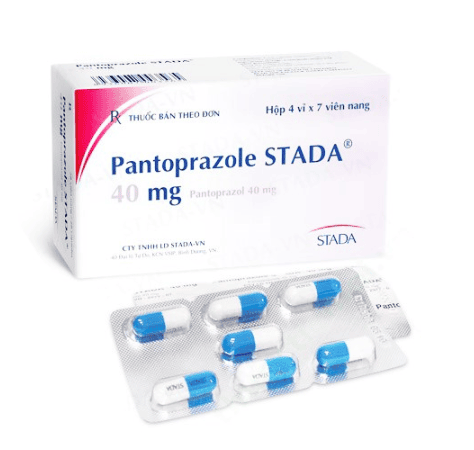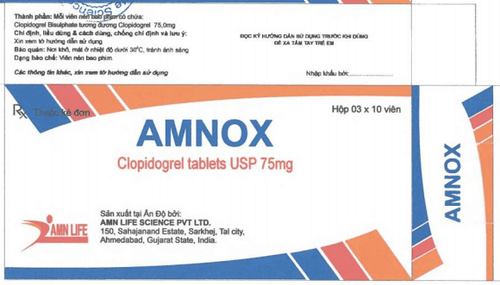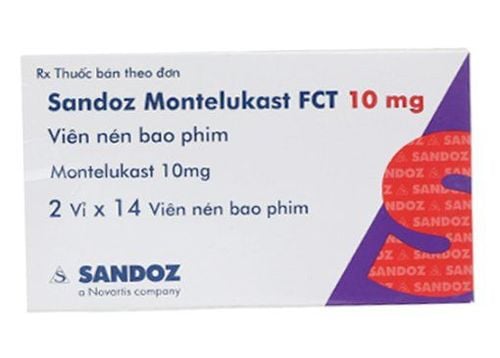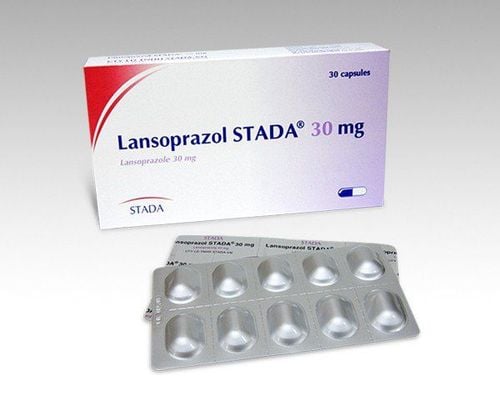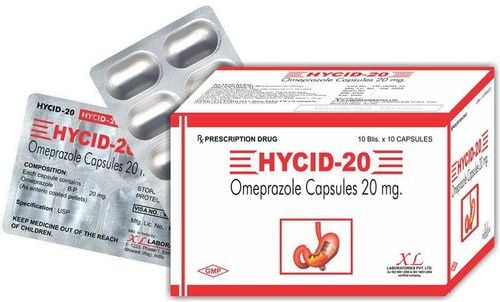This is an automatically translated article.
Ranbeforte drug has the main ingredient Rabeprazole with the use of treating advanced stomach ulcers, gastroesophageal reflux disease. So how effective is Rabeprazole? Things to note will be answered through the article below.
1. What is Ranbeforte?
Ranbeforte medicine contains Rabeprazole sodium (as lyophilized powder) 20mg and other excipients. The drug Ranbeforte is prepared in the form of coagulant powder and packaged in vials.
2. What are the uses of Ranbeforte?
Righteous Ranbeforte is used in the following cases:
Progressive gastric ulcer with bleeding or severe erosion. Gastroesophageal reflux disease - severe ulcerative or erosive esophagitis (GORD/GERD), or non-erosive reflux disease (NERD) but the patient cannot take oral medication. Cases of patients with pathological hypersecretion including Zollinger-Ellison syndrome. Follow-up treatment of oral rabeprazole, in patients temporarily unable to take oral medication for any reason, eg surgery.
3. Dosage and how to take Ranbeforte
3.1. How to use Ranbeforte drug intravenously, slow intravenous injection over 15 minutes or intravenous infusion. Do not inject intramuscularly.
Completely dissolve Rabeprazole powder with 5ml of distilled water for injection. Rabeprazole solution after reconstitution is clear and colorless. Patients absolutely do not use the drug if there is a drug that changes color or is cloudy or precipitates.
Rabeprazole injection powder is compatible with distilled water for injection and sodium chloride solution. In addition, the patient should not be mixed with any other solvent or infusion not specified.
3.2. Dosage: Stomach ulcer disease: 20mg Rabeprazole / time / day. Gastroesophageal reflux disease: 20mg Rabeprazole / time / day. Zollinger - Ellison syndrome: Initial dose of 60mg Rabeprazole / time / day, adjust the dose according to the patient's response. The dose can be increased to 120mg Rabeprazole/day, when the daily dose is higher than 100mg Rabeprazole should be divided into 2 doses. Follow-up treatment orally: 20mg Rabeprazole / time / day. No dose adjustment of Rabeprazole is required in patients with renal or hepatic impairment or the elderly. Doses above 40 mg rabeprazole/day have not been studied in patients with hepatic impairment. No dose adjustment of Rabeprazole is required in patients on hemodialysis. Children: Rabeprazole is not recommended because there is little experience with safety and efficacy in this population.
4. Contraindications to the use of Ranbeforte
Ranbeforte drug should not be used in the following cases:
Patients with hypersensitivity to Rabeprazole, Benzimidazol derivatives or any of the ingredients in the drug. Women who are in pregnancy. Breastfeeding mothers.
5. Be careful when using Ranbeforte for treatment
Before using Ranbeforte for treatment, patients should carefully consult the instructions for use of the drug or as directed by a doctor or pharmacist. In addition, patients can refer to some of the following notes before taking Rabeprazole.
The possibility of malignancy or cancer should be excluded prior to treatment with Rabeprazole because treatment may relieve symptoms but cannot prevent the presence of gastric or esophageal malignancy. In a study of patients with mild to moderate hepatic impairment compared with controls of similar age and sex, there were no safety concerns. However, caution should be exercised when initiating rabeprazole in patients with severe hepatic dysfunction. There are no data on the adverse effects of the drug on the ability to drive and use machines. The drug is contraindicated in pregnant and lactating women because there are no data on safety and efficacy when using the drug.
6. Effects that occur when taking the drug Ranbeforte
During the use of Ranbeforte, patients may experience some of the following undesirable side effects.Most common are diarrhea, nausea and vomiting, headache. Other possible side effects include: abdominal pain, rhinitis, asthenia, flatulence, sore throat, cough, unspecified pain, back pain, dizziness, flu syndrome, infection, constipation and insomnia. Less common side effects include: muscle pain, chest pain, joint pain and fever, drowsiness, dry mouth, indigestion, nervousness, rash, bronchitis, sinusitis, chills, leg cramps, infection urinary tract bacteria. In isolated cases, anorexia, depressed gastritis, weight gain, itching, sweating, visual or taste disturbances, and leukocytosis may occur. Elevated liver enzymes were observed in 2% of patients receiving rabeprazole. Thrombocytopenia, leukopenia, neutropenia, vesicular rash and other skin reactions including erythema have been reported. Discontinue use of Ranbeforte immediately if skin lesions occur. Patients should inform their doctor or pharmacist of all unwanted side effects that occur when using Ranbeforte for an appropriate treatment plan.
With mild adverse effects, patients often simply need to stop taking the drug can make these symptoms disappear. In case the patient is severely sensitive or has allergic reactions, it is necessary to conduct supportive treatment (keep breathing and use oxygen, Epinephrine, antihistamines, corticosteroids...).
7. Ranbeforte . drug interactions
Below are some drugs when combined with Ranbeforte drugs can occur drug interactions.
Rabeprazole sodium administration studies in healthy subjects have shown that rabeprazole sodium does not interact clinically with other drugs metabolised by the CYP450 system such as Phenytoin, Warfarin, Diazepam or Theophyllin. Due to its long-lasting and complete inhibition of acid secretion, Rabeprazole sodium may interact with drugs with a pH-dependent absorption. Concomitant administration of rabeprazole sodium resulted in a 33% decrease in ketoconazole concentrations and a 22% increase in digoxin digoxin concentrations. Therefore, patients should be monitored to determine whether a dose adjustment is necessary when these drugs are co-administered. There have been reports of clinical trials showing no interaction of rabeprazole with liquid antacids. Ranbeforte does not interact with food. Studies have shown that the potential for interaction is very low, but the effect on cyclosporin metabolism is similar to that of other proton pump inhibitors. Hopefully, the information mentioned through the above article can help patients have a lot of useful knowledge about the Ranbeforte drug line. Patients should not arbitrarily buy Ranbeforte medicine to self-treat to ensure safety and avoid possible side effects.
Please dial HOTLINE for more information or register for an appointment HERE. Download MyVinmec app to make appointments faster and to manage your bookings easily.




